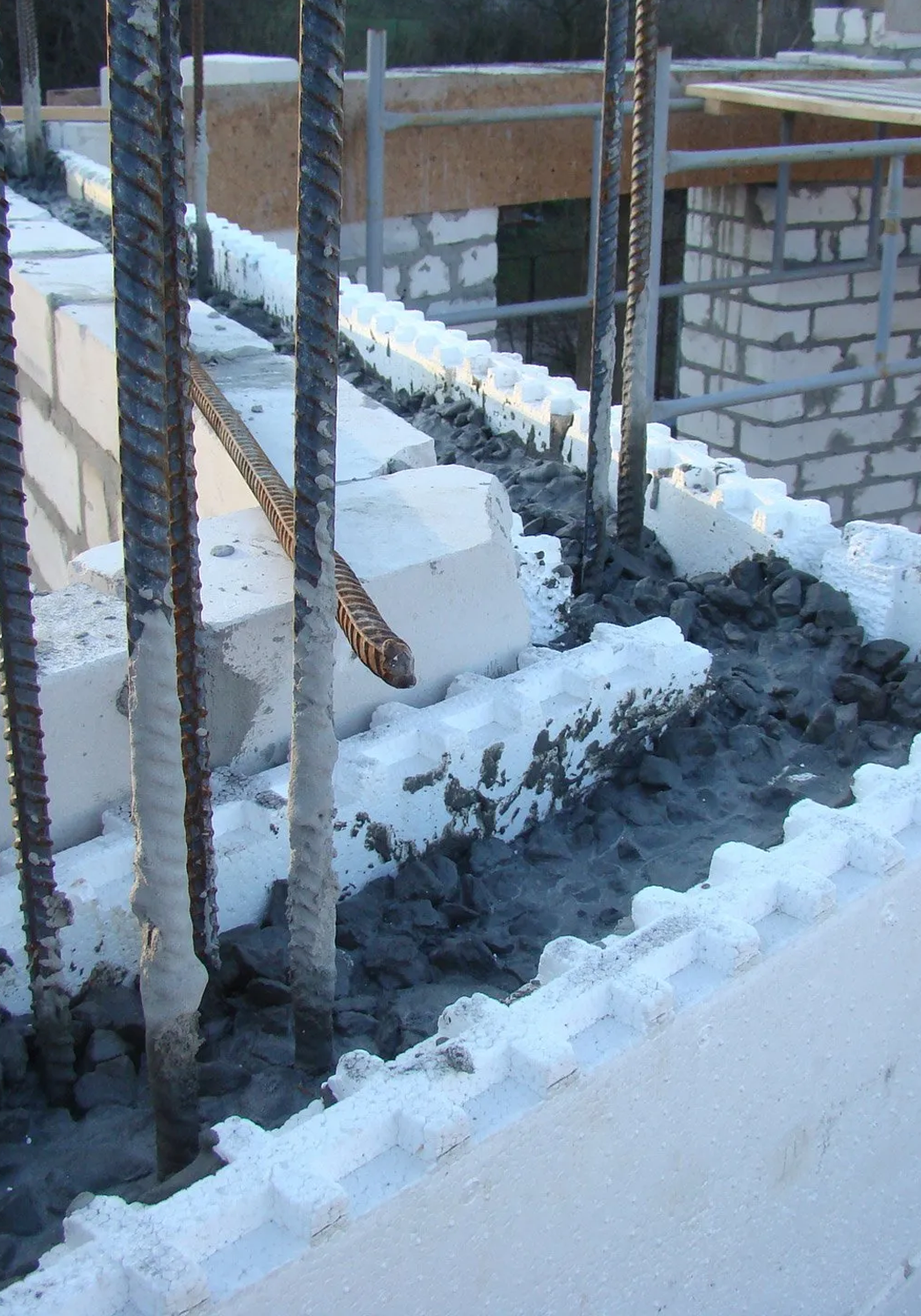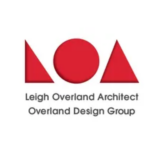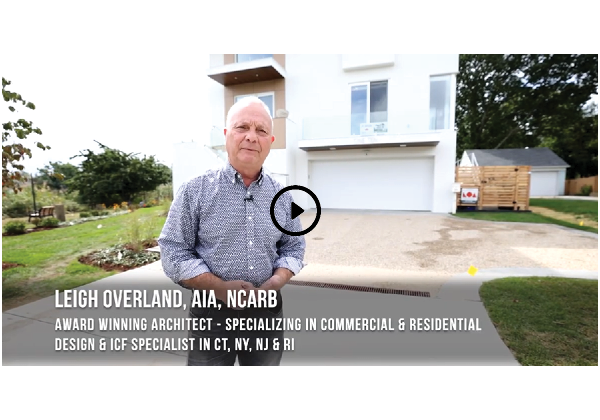Insulated Concrete Forms
Shaping the Future of Construction
Leigh Overland Architect specializes in Insulated Concrete Forms (ICFs) Design. They are revolutionizing the way we build structures, offering a host of benefits that make them a compelling choice for the future of construction, any style or size building. Let’s delve into why ICFs are changing the game.

Enhanced Comfort and Energy Efficiency
ICFs elevate home comfort by providing superior insulation. Unlike traditional wooden frames or steel reinforcements, ICFs use hollow foam blocks or panels that interlock to create a mold for pouring concrete. The resulting walls are sturdy and well-insulated, keeping indoor temperatures stable and reducing energy consumption.
Predictable Costs
Builders appreciate the predictability that ICFs bring to construction budgets. Unlike the volatile lumber market, where prices can fluctuate wildly, ready-mix concrete and ICFs have weathered economic crises more steadily. With ICFs, you can estimate costs more accurately and avoid unexpected budget surprises.
Disaster Resilience
ICFs offer excellent disaster resilience. Their solid construction withstands extreme weather events, such as hurricanes, earthquakes, and floods. The combination of reinforced concrete and insulation provides a robust envelope that protects occupants and their belongings.
Reduced Labor and Trades
ICFs streamline the building process. When using ICFs, builders get several essential steps in one package:
1. Concrete: The ICFs serve as the formwork for pouring concrete.
2. Steel Reinforcement: The foam block integrates steel rebar for exceptional strength.
4. Air Barrier: The interlocking design minimizes air infiltration.
5. Vapor Barrier: ICFs prevent moisture penetration.
6. Furring Strips: built in ready for exterior siding and interior Gypsum board.
This bundling of steps reduces labor requirements and the number of trades working on-site. Framers can easily set up ICFs, making the construction process more efficient.
Meeting Net-Zero Requirements
As sustainability becomes a priority, ICFs play a crucial role. Their unmatched insulation properties align with net-zero energy goals. In cold climates, ICFs help meet stringent energy efficiency requirements, making them an ideal choice for environmentally conscious builders.
Conclusion
Insulated Concrete Forms are more than just a mold for concrete; they represent a paradigm shift in construction. With benefits ranging from energy efficiency to disaster resilience, ICFs are shaping the buildings of the future. As we strive for sustainable, comfortable, and cost-effective structures, ICFs will continue to play a pivotal role in transforming the industry.
Remember, the future of construction lies in innovation, and ICFs are leading the way!
Contact Leigh Overland Architect to learn more about the other products leading the way!
– CF exterior walls, (cost less and are Fire/storm proof and are highly efficient, healthier, sustainable and safer than traditional wood construction.)
– SIP roofs (no roof rafters),
– Metal stud interior walls and floors (factory made, delivered and set up in a few days per floor.)
– In-floor radiant heat AND cooling (eliminates ductwork and contaminants)
– Triple pane European doors and windows (Cost less than most standard windows).
– With solar panels, (these homes can be net zero). Without they save about 50% on energy.
Check out the couple of minute video below of my ICF home/office, and if you would like a tour let me know.
If you’re looking for an expert architect to design your new, energy-efficient home or office building, visit www.ldoverland.com.

Want more?
Click here for more tips and tools articles written by HBRA Members!


